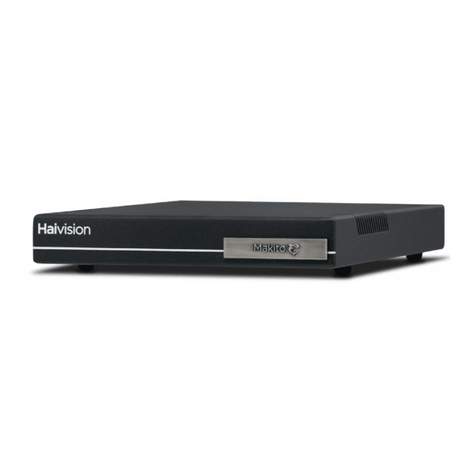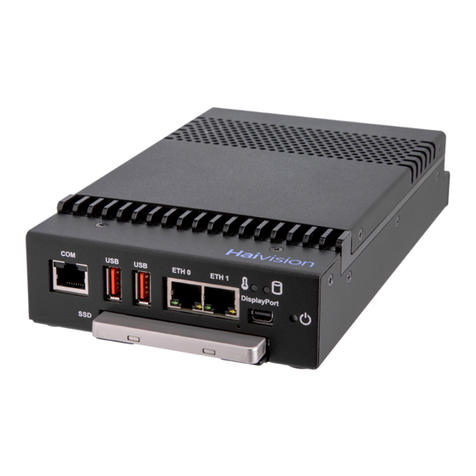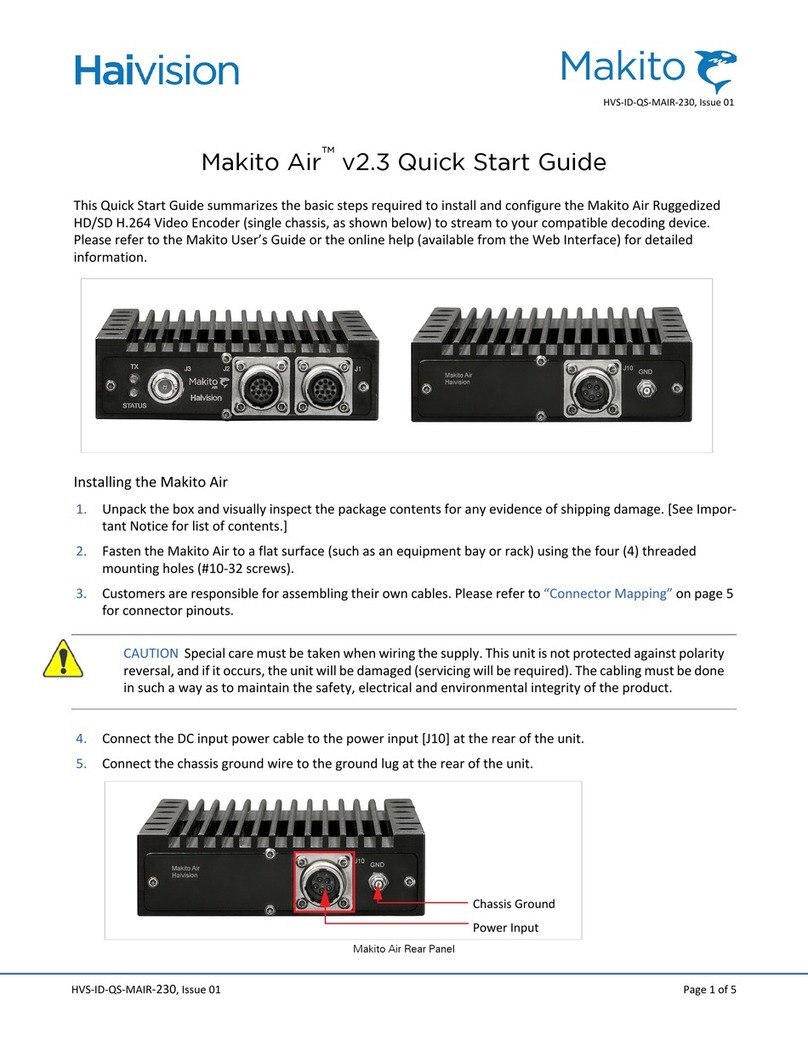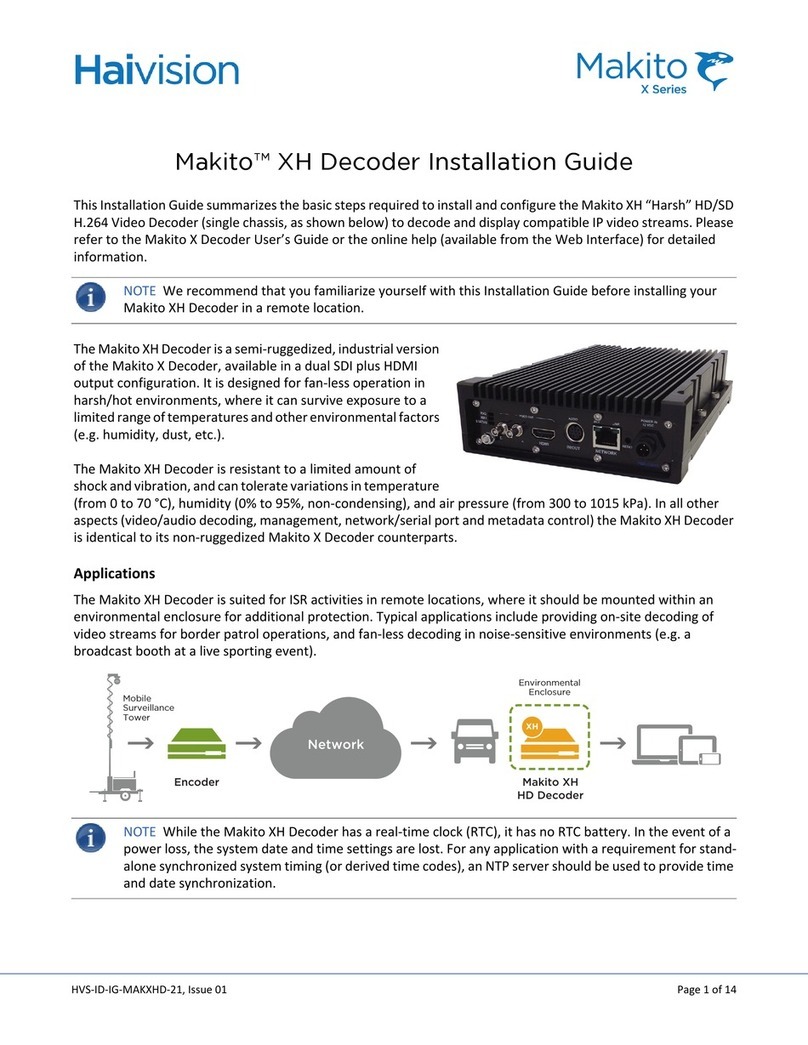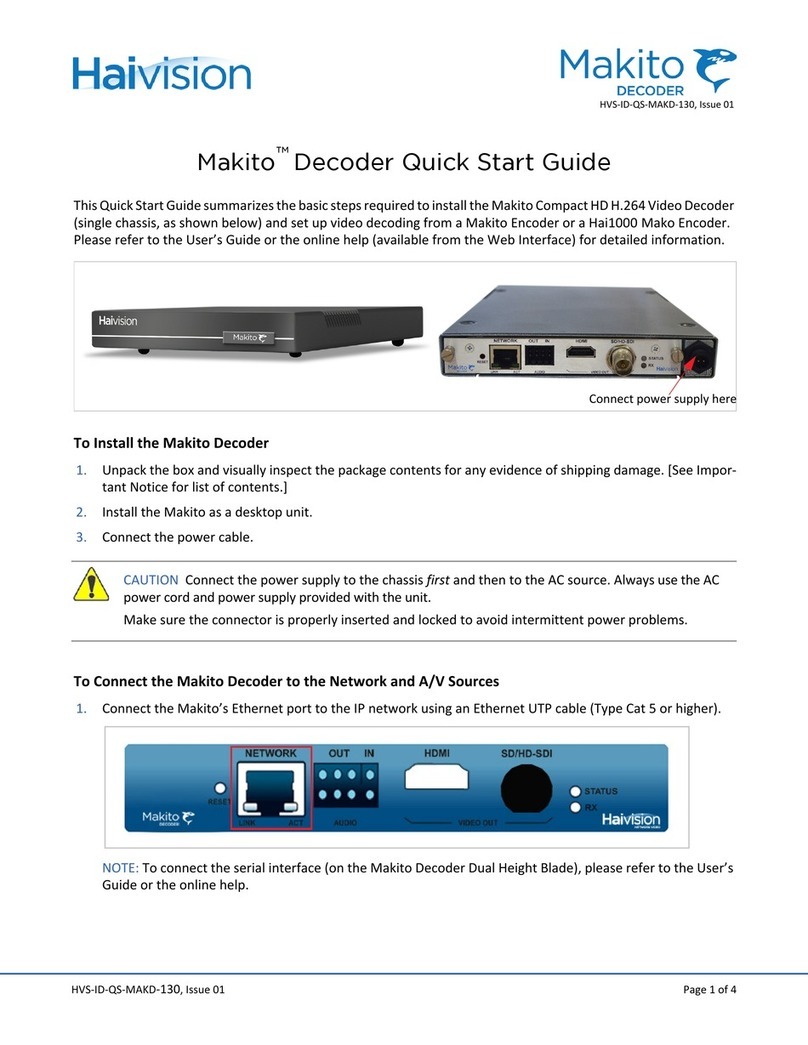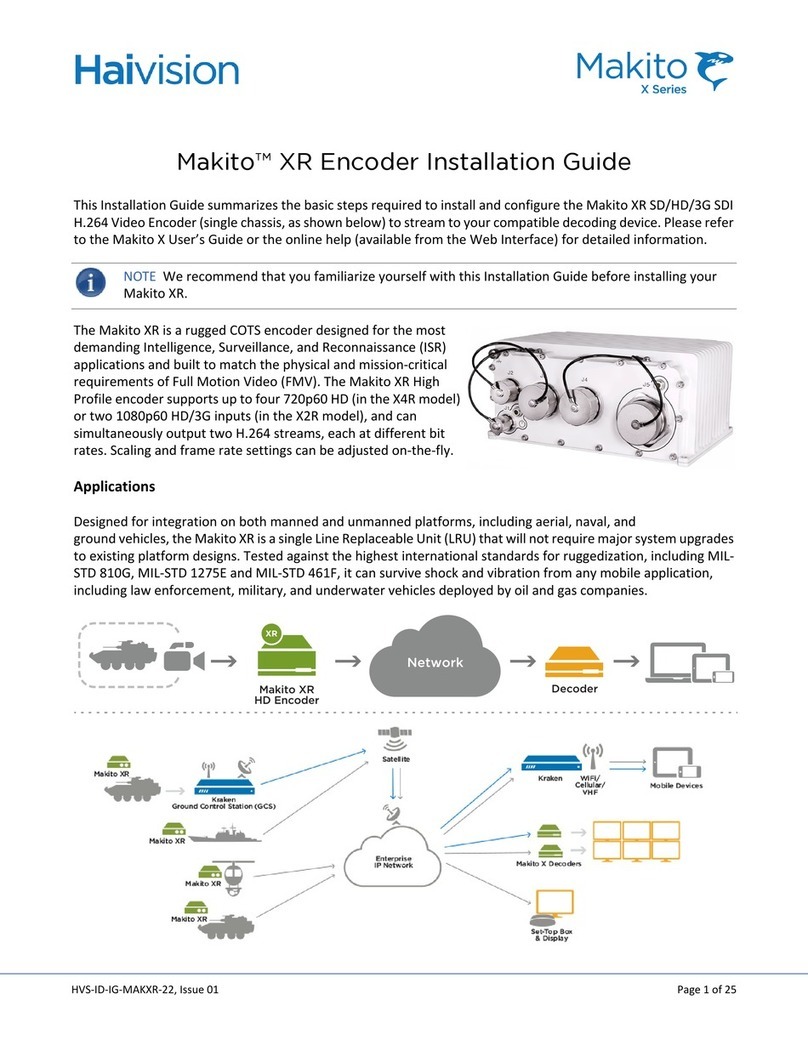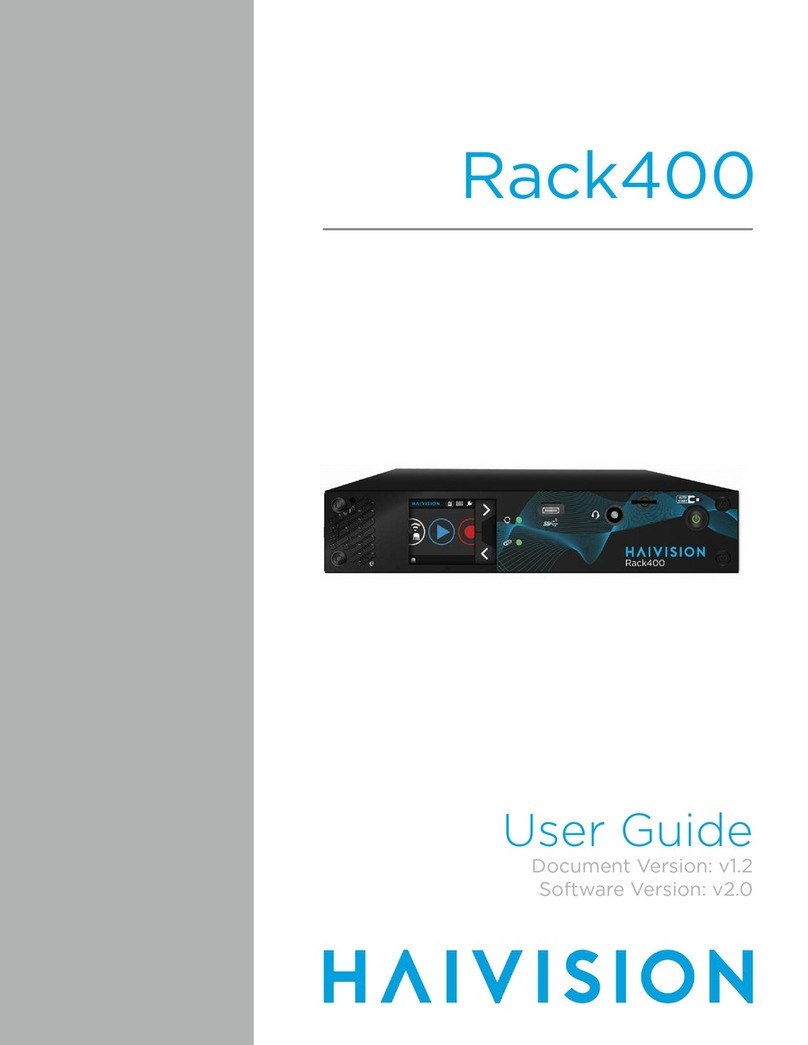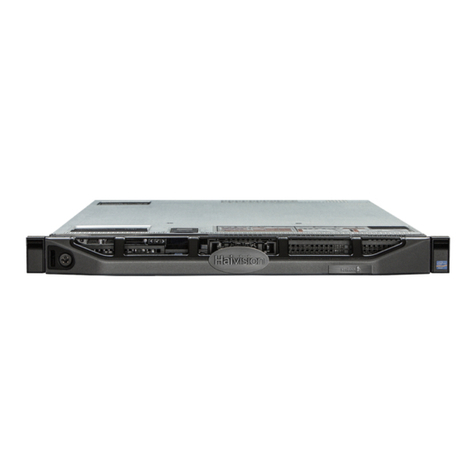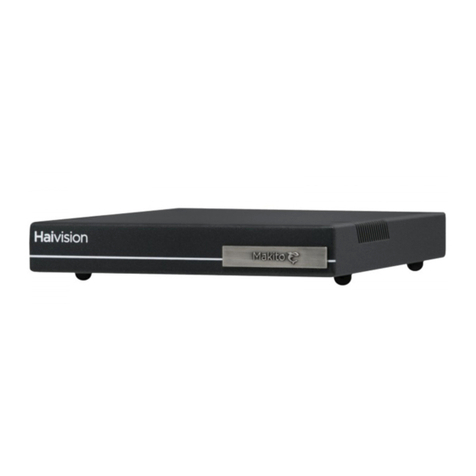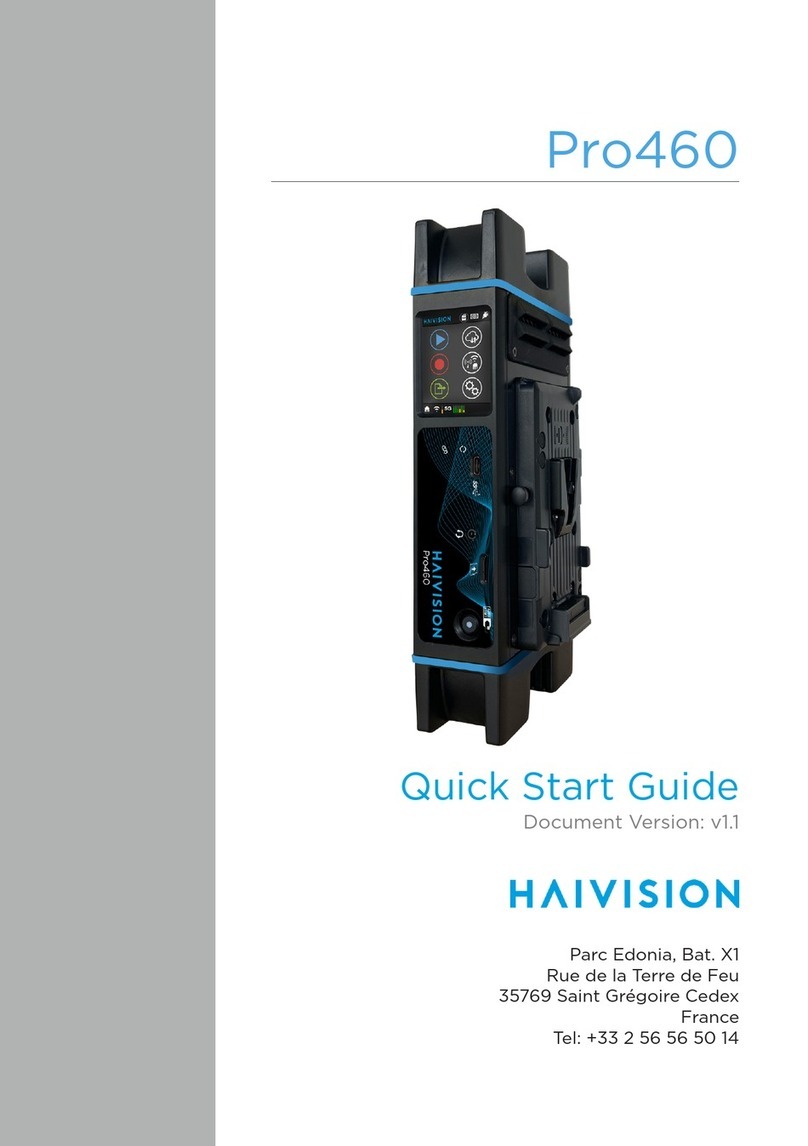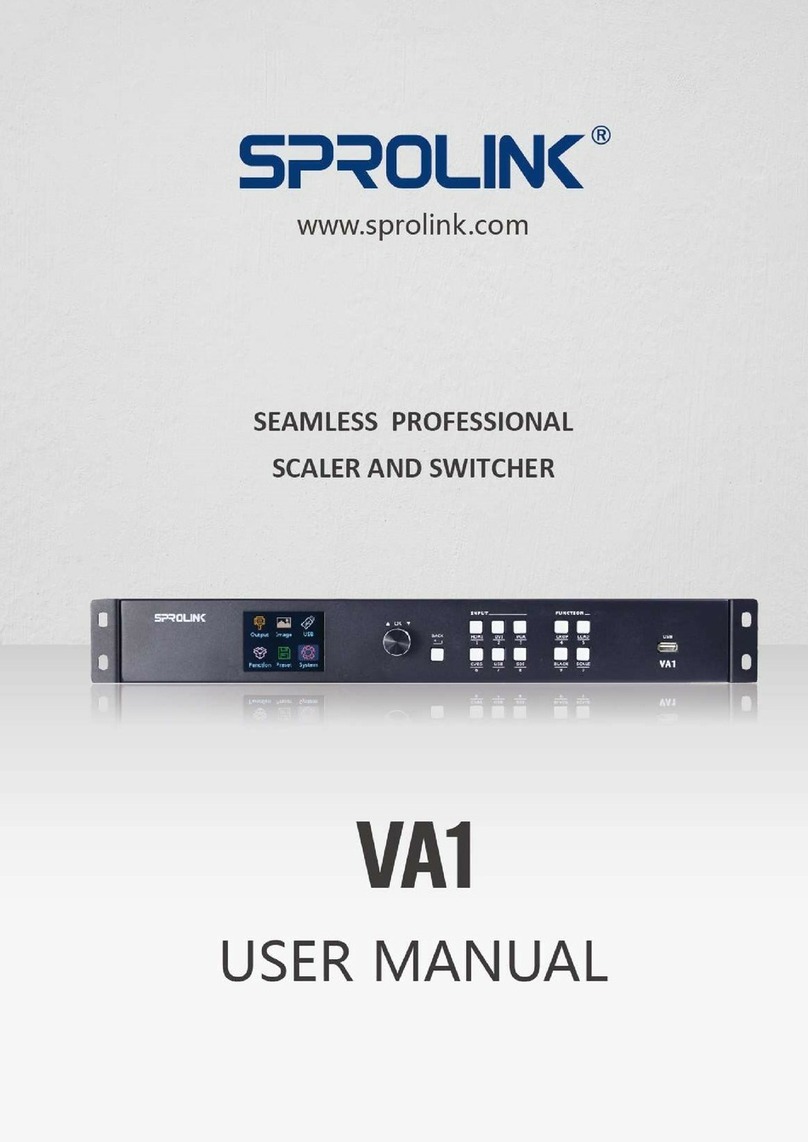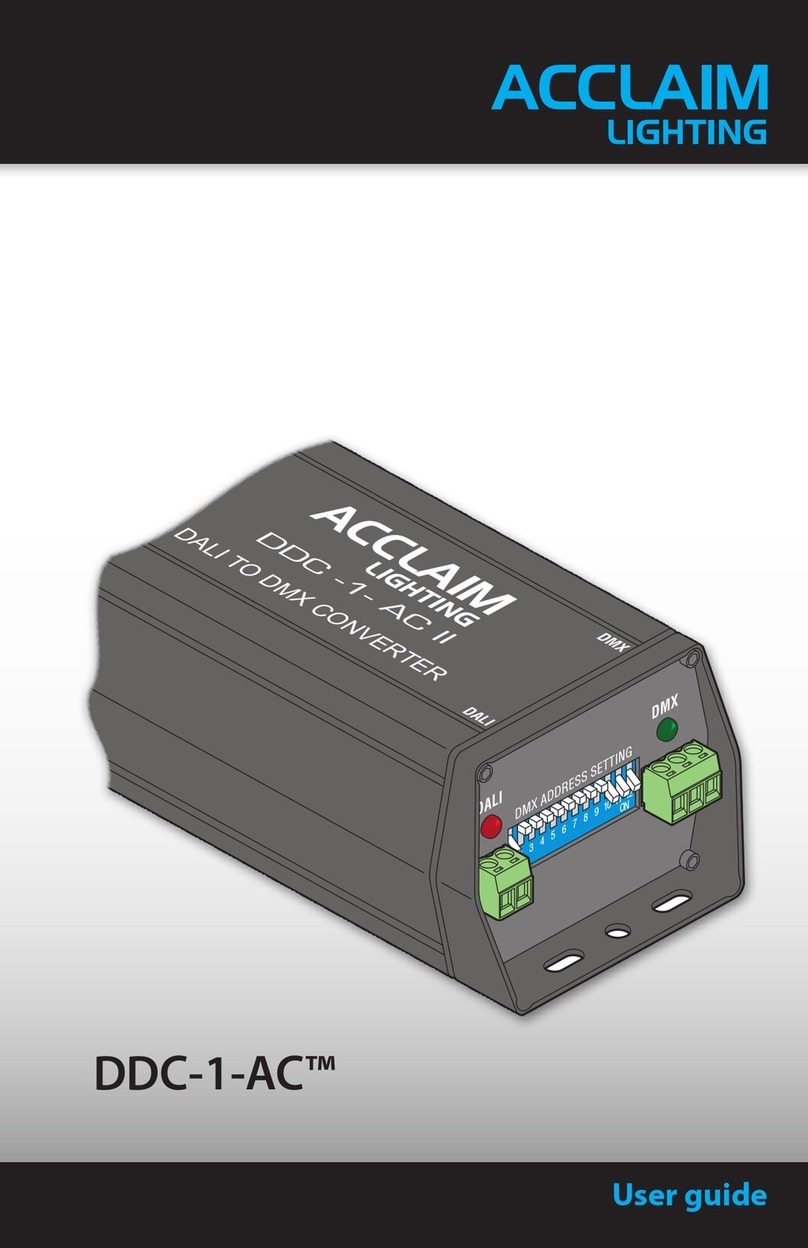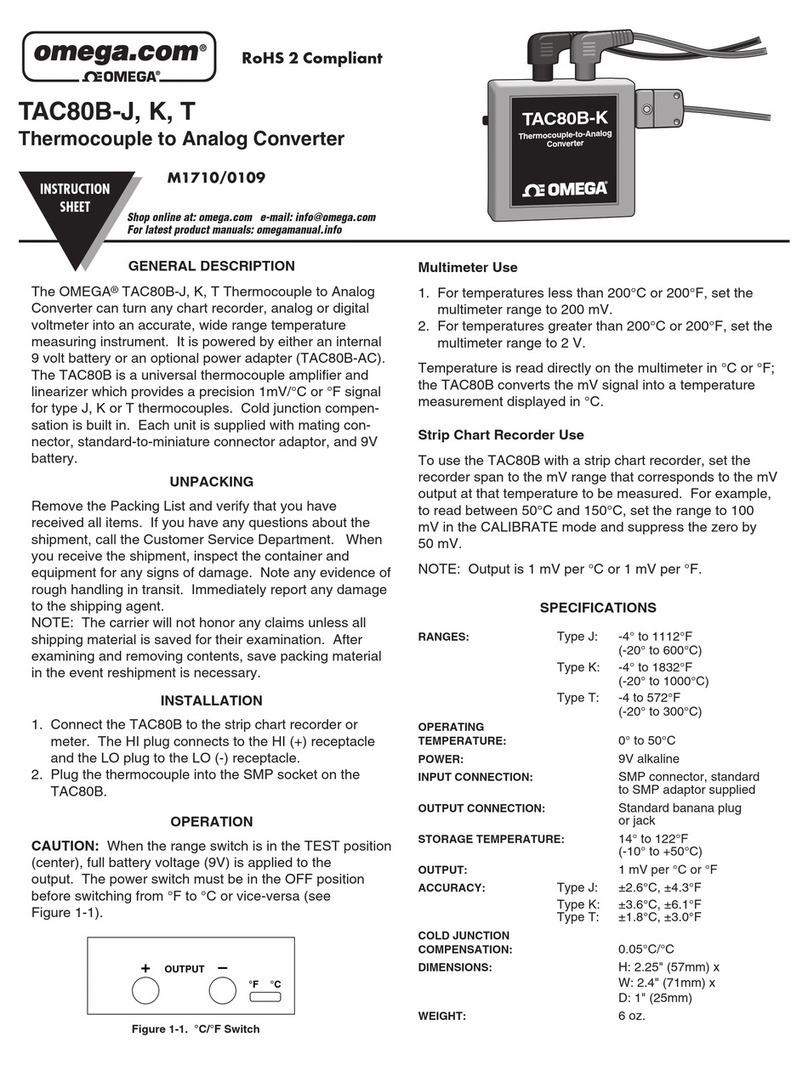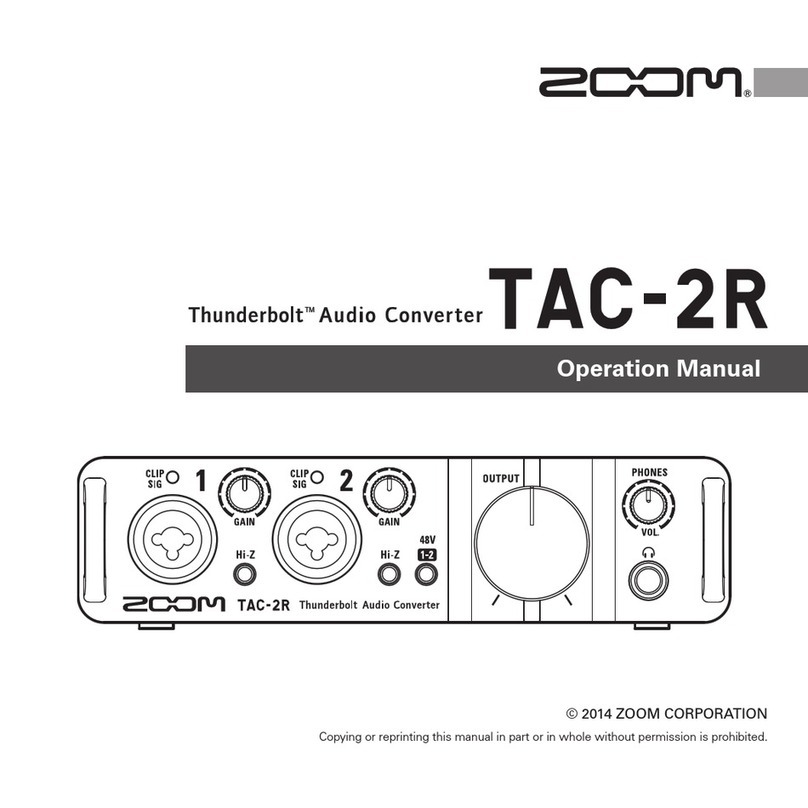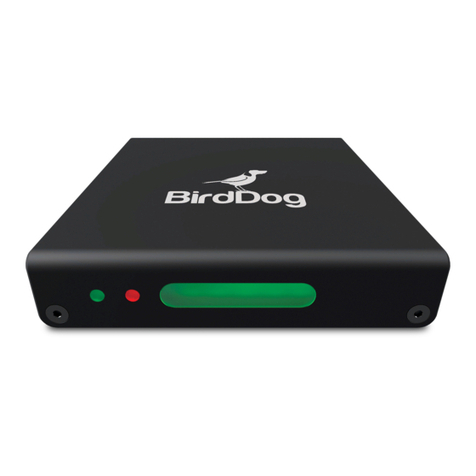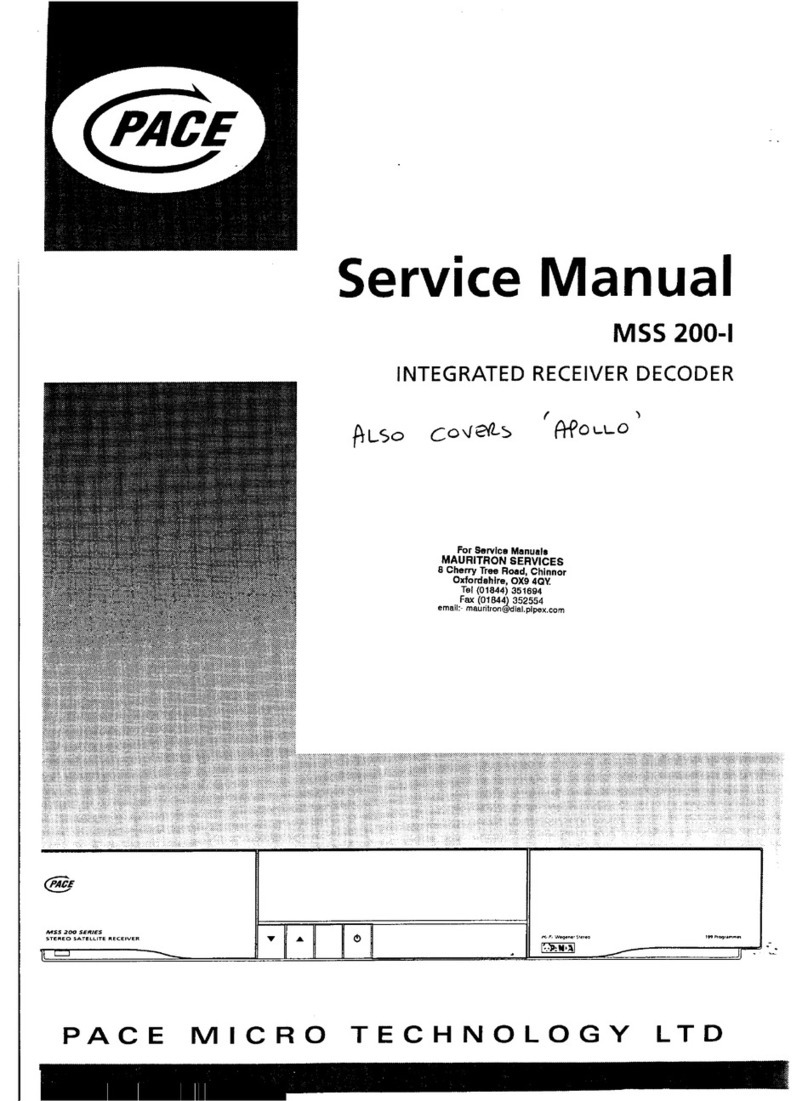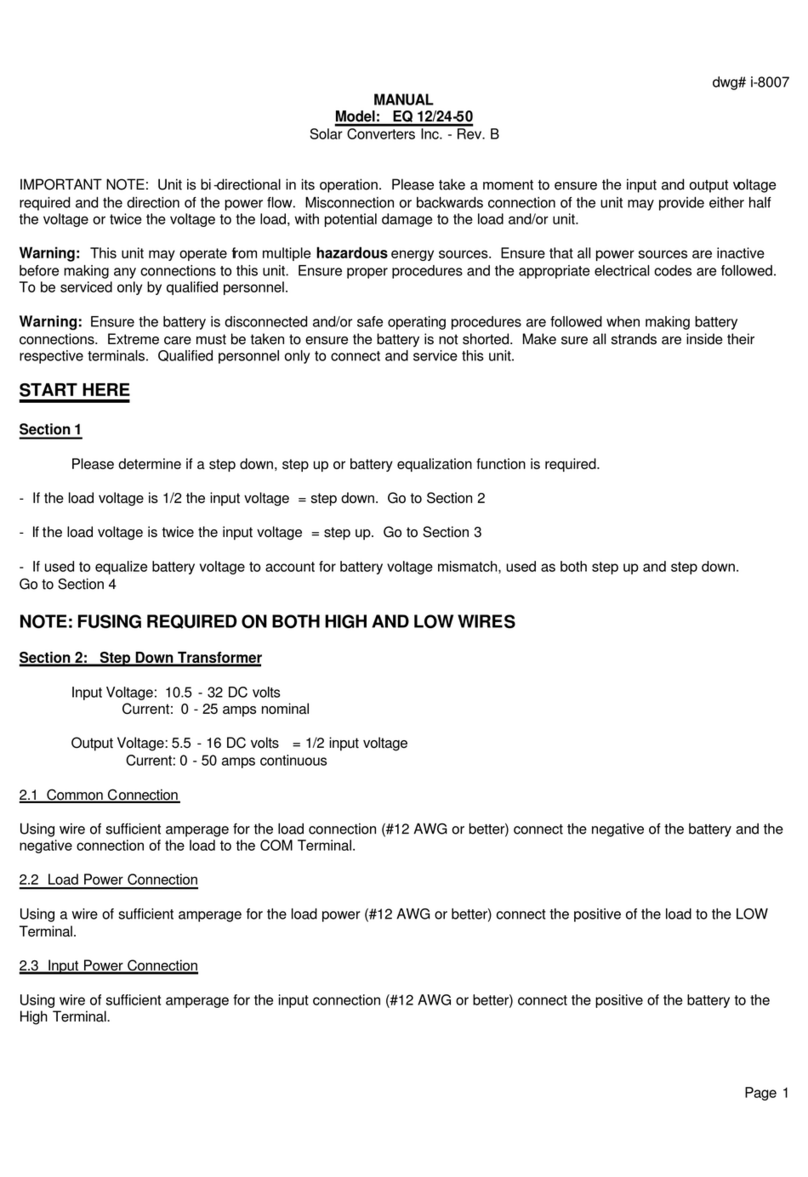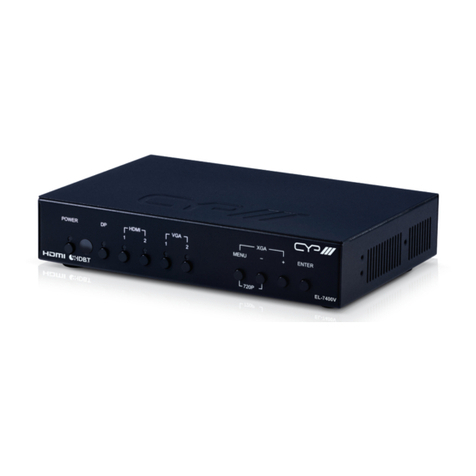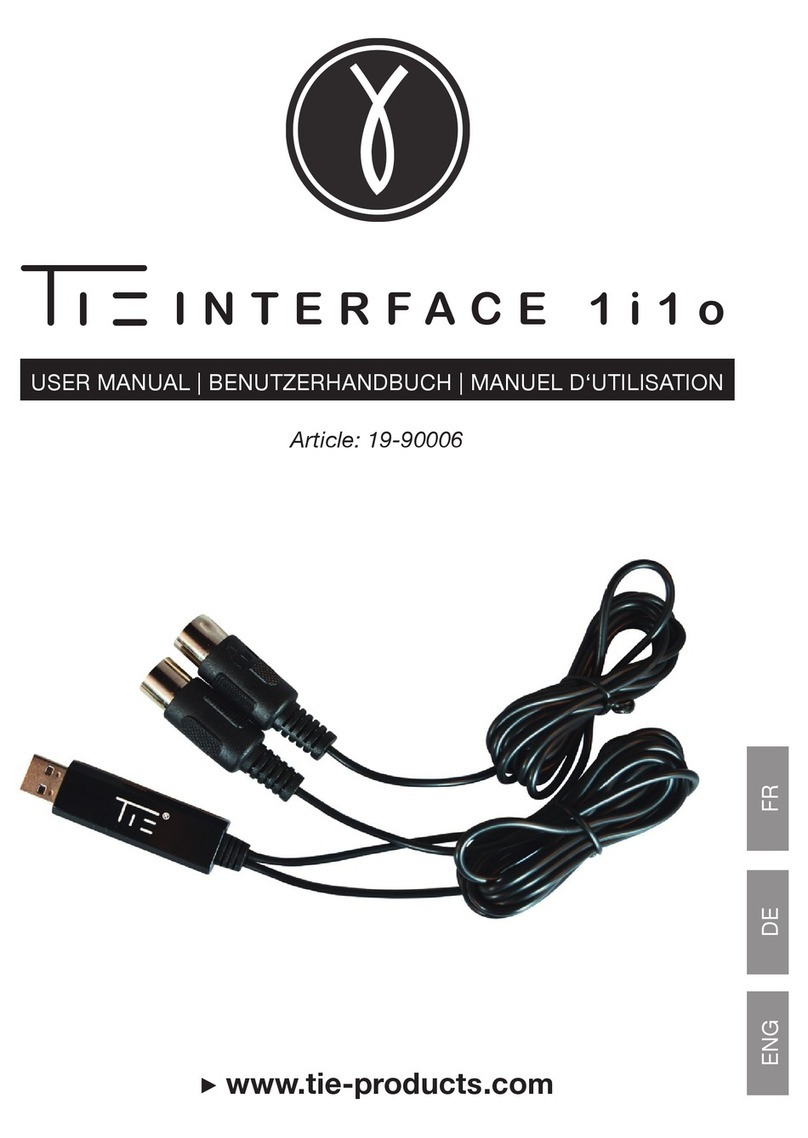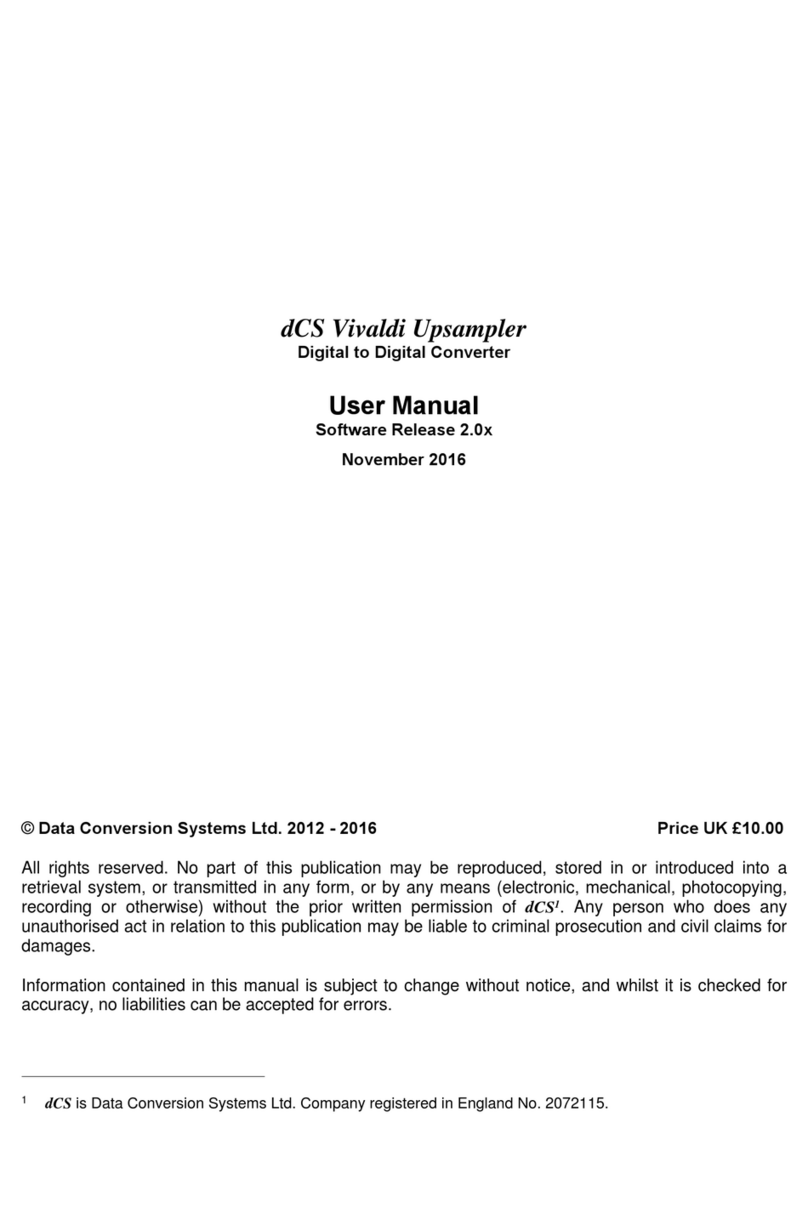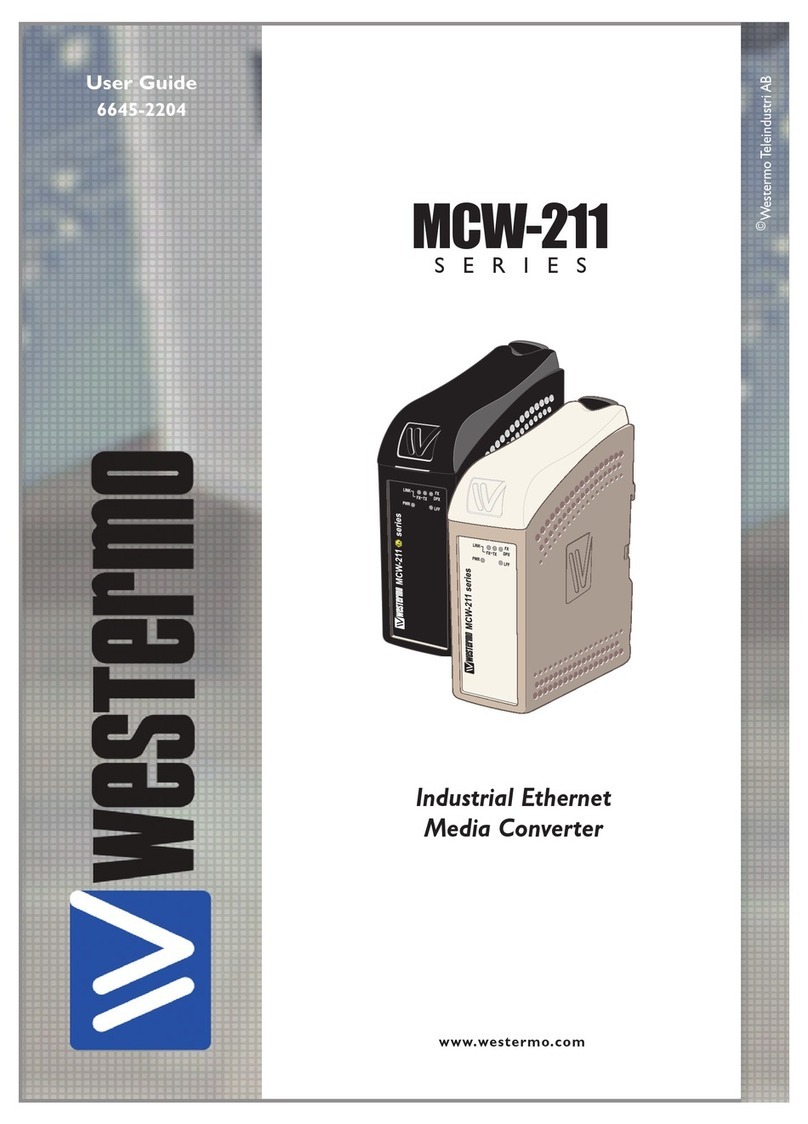
Table of Contents
Makito Decoder User’s Guide, v1.3, Issue 01 5
HDMI Audio/Video Output Connector Pinout ............................................................... 32
Powering Up the Unit ............................................................................................................. 33
Single Blade Chassis ....................................................................................................... 33
MB21 (Twenty-One Slot) Chassis .................................................................................. 35
MB6 (Six-Slot) Chassis ................................................................................................... 37
Resetting the Decoder............................................................................................................. 40
Hardware Reset ............................................................................................................... 40
Part II: Session Configuration and Management
Chapter 3: Managing the Decoder
Management Overview........................................................................................................... 45
Using the Web Interface................................................................................................... 45
Using the CLI ................................................................................................................... 45
SNMP-based Management............................................................................................... 45
Accessing the Decoder............................................................................................................ 46
Default Decoder IP Address ............................................................................................ 46
Access Control ................................................................................................................ 47
Logging In to the Web Interface............................................................................................. 48
Exploring the Web User Interface .......................................................................................... 49
Navigational Menus ........................................................................................................ 49
Apply and Save ............................................................................................................... 50
Online Help ..................................................................................................................... 51
Configuring the Video Settings .............................................................................................. 52
Video Settings ................................................................................................................. 53
Makito X2 Interoperability .............................................................................................. 55
Managing the Audio Settings ................................................................................................. 56
Audio Settings ................................................................................................................. 57
Configuring the Stream Settings............................................................................................. 58
Stream Overview Page .................................................................................................... 58
Streams Page ................................................................................................................... 59
Stream Settings ................................................................................................................ 60
Managing the COM Port.................................................................................................................... 62
Configuring Network Settings ................................................................................................ 64
Network Settings ............................................................................................................. 65
Viewing System Status Information ....................................................................................... 67
Rebooting the Decoder .................................................................................................... 68
Taking a System Snapshot .............................................................................................. 69
Saving and Loading Configurations ....................................................................................... 71
